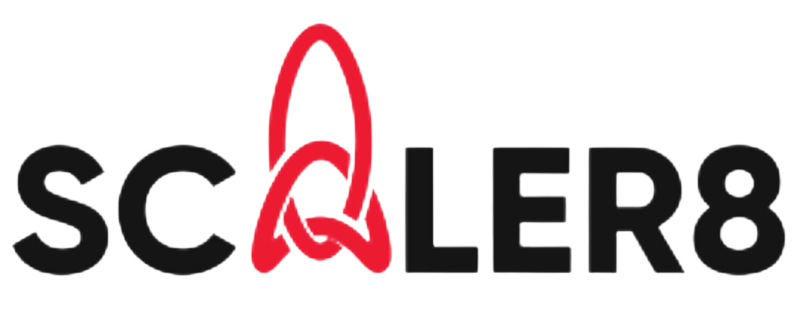One of the most challenging situations for startups and businesses is investing time and energy in developing a product, only to find out there’s no interest after launch.
Regrettably, this issue is widespread in the business world, with an estimated 95 percent of new products failing each year.
A primary reason for product failure is the disconnect between the entrepreneur and the customer. Products created without understanding the market are almost always doomed to fail. Fortunately, this information gap can be bridged through product validation.
What is Product Validation?
Product validation is the process by which a product is tested and evaluated to ensure that it meets the needs and expectations of a target market. The main goal of product validation is to confirm demand for a product, that it solves a real problem or fulfils a need, and has the potential to succeed in a given market.
In this article, we will explore critical aspects of product validation that every entrepreneur needs to know, from identifying the target market to gathering feedback and more.
1. Product Development Through the Lens of Your Target Market

Understanding your target audience is an important step in product validation. By uncovering what drives and motivates your audience, you can develop a product or service that is more likely to succeed in the market and drive sustainable growth for your business.
A good way to start is by identifying your target audience. Consider factors such as demographics, geographic location, and psychographics. Think about the characteristics that make your ideal customer unique, and use this information to create detailed customer personas representing the different segments of your target audience.This will help you gain a deeper understanding of your target audience, tailor your product development and marketing efforts, and ultimately improve the effectiveness of your overall business strategy.
While studying your target audience, also analyse market trends and your competition to gain insights into the current landscape. Investigate how your competitors position themselves in the market and identify any gaps or opportunities your product could fill. Assess the market size and potential growth by conducting market research and analysing industry reports ensuring your product has room to succeed in the chosen market.
2. Crafting a Compelling Value Proposition
We’ve covered why it’s important to understand your target audience, but just as essential is clearly defining your product’s unique selling points and articulating the problem it solves. This will help differentiate your product from competitors, effectively communicate its value to customers, and guide marketing efforts towards attracting your intended audience.
To do this, think about what sets your product apart from existing options in the market and how it addresses your target audience’s needs and pain points. Look for innovative ways to address customer pain points or find opportunities to improve existing solutions.
By refining your value proposition, you can ensure your product adds value to customers’ lives and stands out.
3. Feedback – The Key to Product Refinement

Collecting feedback is crucial to product validation as it enables entrepreneurs to refine their products based on real user experiences. Additionally, feedback helps identify potential shortcomings and ensures that a product aligns with customer needs and expectations. Some methods for gathering feedback include surveys, interviews, focus groups, social media, online reviews, and beta testing.
Surveys and interviews offer insights into the needs, preferences, and pain points of your customers. Focus groups enable you to delve deeper into customer opinions to explore potential improvements to your product.
Analysing online reviews and social media feedback can help you identify trends and recurring issues that customers experience with similar products in the market. Meanwhile, beta testing or minimum viable product (MVP) testing allows you to gather feedback from real users and identify any unforeseen issues or areas for improvement.
4. Measuring Success and Demand
Genuine validation occurs when customers are willing to open their wallets and pay for a product. This means that you’ll have to first assess if there’s sufficient demand in your target market. Quantitative market validation techniques can help assess market demand and facilitate other essential business components such as marketing or decision-making.
For example, A/B testing and conversion rate optimisation can help you identify the most effective marketing messages and pricing strategies. Analysing industry benchmarks and key performance indicators (KPIs) can provide insights into your product’s performance relative to competitors. Leveraging market research tools and resources can further support your validation efforts, ensuring that your product is on the right path to success.
5. Safeguarding Your Ideas

Protecting your idea and ensuring compliance with legal requirements are vital aspects of product validation. Assessing your product for intellectual property (IP) protection, such as patents and trademarks, can help secure your competitive advantage and minimise potential legal disputes.
Ensure your product’s legal compliance, including adherence to industry-specific regulations, to save you from costly fines and protect your brand’s reputation. It’s also essential to understand potential liabilities and risks and explore licensing opportunities and partnerships that can help you navigate the market more effectively.
6. Differentiating Your Product
A memorable and consistent brand identity is essential for capturing your target audience’s attention and distinguishing your product from competitors. Developing a clear and effective messaging strategy ensures that your value proposition resonates with potential customers.
Utilising social media and content marketing enables you to engage with your audience and showcase your brand’s personality. Establishing thought leadership within your industry can further enhance your credibility and position your product as a market leader.
7. Adapting for Success
After gathering valuable insights from your market validation efforts, reassess your product’s market fit and adapt it based on the findings. This iterative process helps you fine-tune your offering and prepare for a successful product launch.
Measure your product’s post-launch success and continuously plan for future improvements to stay ahead of evolving market needs and consumer preferences. Embrace a data-driven approach, and remember that product validation is an ongoing process that can help you achieve long-term success. Naturally, this means that your team would have to test and validate multiple versions of your products before you’re able to develop the winning prototype.
By following these guidelines and implementing a comprehensive product validation strategy, entrepreneurs can increase their chances of launching a successful product that meets market demands and delivers value to customers.
Ready to Innovate?
Implementing a comprehensive product validation strategy increases your chances of launching a successful product that meets market demands and delivers value to customers.
As you embark on your product validation journey, consider partnering with experts who can provide the support and guidance necessary for success. At Scaler8, we offer tailored expansion services designed to meet the unique needs of startups and SMEs as well as our Open Innovation programme where we match startups to the right corporates.
In your quest to validate your products, it would be wise to consider the realm of corporate open innovation. This approach allows startups and corporations to collaborate effectively to develop and implement innovative solutions in a fast-tracked, low-risk and cost-effective manner. By leveraging open innovation, your startup can gain access to invaluable resources and expertise that can significantly enhance the product validation process.
One key advantage of corporate innovation is the access it provides to substantial resources. Established corporations possess extensive infrastructures, financial backing, and established networks, which can offer startups the necessary support to validate their products. Leveraging these resources allows startups to conduct real-world testing, refine their offerings, and ensure market readiness.
Ready to take your product to new heights? Reach out to us today and let us help you navigate the challenges of international market expansion and help drive innovation in your business.




